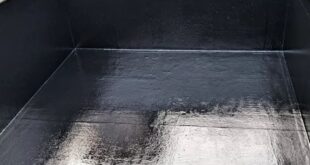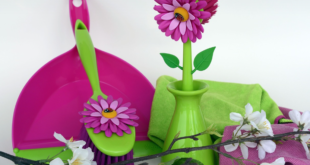Acetate
Wash acetate, such as satin, in warm water on the delicate programme. Do not spin and iron on a cool setting.
Acrylic
Often used as an alternative to wool. Wash on a synthetics programme in warm water on a short spin. Add fabric conditioner to reduce static in the last rinse. Don’t wring, shape when wet and dry flat. Iron on cool without the steam setting.
Ammonia
Give coats and suits a clean by sprinkling a damp rag with ammonia and rubbing down.
Angora
Hand-wash and treat as you would wool. Store in the fridge, wrapped in a plastic bag to prevent moulting before wearing if you have the space.
Antique lace
Wash in a mild detergent and dry flat. For precious pieces, seek professional advice before cleaning.
Baking soda
Use baking soda in your wash instead of proprietary softeners. It sweetens and softens the clothes just as well.
Ball point pen stains
These can be removed by eau de cologne soaked into a cotton bud. Rub gently. Alternatively, methylated spirits applied to the stain and then rinsed thoroughly is another good tip. Wash as normal.
Blood stains
Pour a little hydrogen peroxide onto a cloth and wipe the stain until it is gone. Or soak in half a cup of salt mixed in a medium bucket of water. Then wash as normal.
Brocade
This is the stiff, heavy fabric quite often used for upholstery and soft furnishings. Dry clean only and use a cool iron on the reverse side.
Broderie anglais
Treat according to fabric type and care label. Place in a muslin bag before machine washing.
Calico
Wash as cotton. Bleach can be added to unbleached calico in the first wash, but be sure to rinse thoroughly.
Candle wax
Freeze the fabric for an hour or so allowing the wax to harden. Crack off as much as possible and then sandwich the residue between two sheets of clean brown paper. Press with a warm iron. Dry cleaning fluid will get rid of any remnants. Treat colour from the wax with white spirit and then rinse.
Cashmere
Hand-wash or dry clean its up to you? Brave people will even wash on a wool setting in the machine. Whichever method you stick to, always use the same one for that garment. Do not use softener as this can cause felting.
Chenille
Wash according to fabric type or dry clean.
Chiffon
Wash according to fibre or dry clean. While damp, iron gently with a cool iron. Do not spin or wring.
Chocolate
Scrape the excess with a blunt knife. Rinse in cold water and then treat with liquid detergent and rinse. If the stain persists try treating with a dry cleaning solvent.
Corduroy
To protect the pile on corduroy, use a synthetic programme with minimal spin. Wash trousers inside out and iron on the reverse while damp on a steam setting. Brush up the pile gently.
Coffee and tea stains
Run under the cold tap as soon as possible. If the stain is a stubborn one you can soak it for a while in hand hot liquid detergent. Any remaining stains can be treated with a solution of half hydrogen peroxide and half water.
Collar marks
Prevent stains from your neck staining your shirt. Just wipe your neck with rubbing alcohol each morning before you dress.
Cotton
Different weights and qualities of cotton are available. Machine washable may fade or shrink if washed above 40 degrees C. Iron on a steam setting while damp. Always use the recommended dosage instructions to avoid greying. Do not overload your machine.
Crepe de chine
Hand-wash according to fibre-type. Rinse in cold water and roll the fabric in a towel to remove any excess water. Iron gently on the cool setting.
Damask
Often used for table linen. Wash according to fibre type. Heavier items should be dry cleaned.
Delicate sweaters
When hand-washing delicate sweaters squeeze very gently and then lift into a colander to remove all excess water and stop them being pulled out of shape.
Denim
If not pre-shrunk, use a cool wash. Always turn inside out and wash separately to avoid colour running. Iron on the maximum or steam setting while damp.
Elastanes/Lycra
Machine-wash on a low temperature using a delicate programme. Alternatively hand-wash in warm water, rinse and run through a short spin or roll in a towel. Do not tumble dry.
Facecloths
Soak in a vinegar and water solution for a while before putting then in the normal wash. This will remove any soapy residue in the facecloth.
Fading
Dark clothes should be turned inside out and washed on the cold water cycle and dried on the lowest possible heat.
Felt, flannel, gaberdine
Dry clean only
Felt tip pen stains
Use hard soap and rub well into the stain to lubricate and wash as normal. Particularly stubborn stains can be treated with methylated spirits and then washed again to remove final traces.
Georgette
Dry clean natural fabrics such as cotton, silk and wool – man-made items may be washed according to fibre type.
Gingham
Check for colourfastness and then wash according to fibre type. Iron while damp with a steam iron.
Grosgrain
This fine, ribbed fabric should be washed according to fabric type.
Hand washing
Most articles today can be machine washed but there are some exceptions like lace, fine silk, some wool and delicate lingerie which need to be hand washed. Use warm water and soap flakes, or a special liquid for washing delicate items.
Ink stains
Rub alcohol on the stain before washing to ensure removal of stains.
Ironing
Put fabric conditioner in the wash as well as filling your steam scented linen water which also makes ironing easier.
Jersey
Wash according to fibre type or dry clean. Use a short spin and dry flat, shaping while wet. Reverse steam iron.
Lace
Place in a muslin bag or pillowcase to protect it then machine-wash according to fibre type with a gentle non-biological powder. Iron on the wrong side while damp, pulling to shape.
Linen
Dry clean garments with anti-crease finishes. Others can be placed in a hot wash and spin dried. Hang to dry then iron on the reverse while it is still damp with a hot steam iron. To add extra body to the garment, starch occasionally.
Lint alert
Do not wash dark clothes with towels or washcloths. Lint from the towels will stick to dark items.
Mildew
Remove loose particles by shaking or brushing. Pre-soak in cold water. Wash in hot water with strong detergent. Bleach can be added to whites. Dry well – heat and sun kill mildew.
Mohair
This light woven fabric should be hand washed and treated as wool.
Moire
Dry clean only and do not steam iron
Moth repellent
To freshen, wash and repel moths from your clothes, add 2 tsp of tea tree oil to your washing machine.
Mould
Add 1/2 tsp of tea tree oil to your laundry for towels and other fabric prone to getting mouldy.
Muslin
Hand wash open-weave sheer cotton in warm water. Do not spin the item, rather dry it flat. While it is damp, iron on a medium setting.
Nappies
Soak or rinse your towelling nappies in water with a dessert spoonful of bicarbonate of soda to help budge the stubborn stains.
Nubuck
Specialist nubuck and calf-leather cleaners require no brushing – suede shampoos and brushes will damage the pile
Peg marks
To prevent peg marks on dresses and tops thread a stocking through the sleeves and peg that to the line.
Percale
This fine cotton or polyester cotton is often used for bedding. Wash item according to fibre type.
Perspiration marks
Soak overnight in a mixture of equal parts of ammonia and water with a little washing up liquid. Then wash as usual.
Polyester
Wash on a synthetics programme with a short spin and fabric conditioner in the final rinse. Tumble-dry if necessary. Hand-wash pleated items and drip dry preferably outside.
Poplin
Wash or clean this closely woven cotton according to the fibre type.
Pure soap
This does not contain animal fat or synthetic chemicals. This is often made with olive oil or coconut oil and is great for washing delicate items by hand. You can make your won soap flakes by grating a bar of pure soap.
PVC
Gently sponge away any marks with diluted washing-up liquid. If necessary, hand-wash in warm water and, if possible, drip dry outdoors on a washing line. PVC melts under direct heat so make sure never to iron or dry clean it.
Quilted jackets
Spot-clean stains or grime on cuffs after checking for weak seams. Then hand wash gently and rinse well. Put knotted towels or tennis balls in the tumble dryer with it and dry until the lining fluffs up. Air outdoors if possible.
Rust
Rust and mineral discolouration can be removed from T-shirts and underwear by adding a cup of lemon juice to the wash cycle. The natural bleaching action of the juice will zap the stains and leave the clothes smelling fresh.
Satin sheets
Wash according to fibre type. Reverse iron while damp until dry. Heavier items should be dry cleaned.
Shantung
Wash this slubbed silk according to fibre type.
Sheepskin
Apply a protective spray to a sheepskin item to avoid marking and staining and dry clean the garment regularly.
Shirt collars
Apply hair shampoo onto soiled areas before washing to clean.
Smoke smell
To remove smoke smell from your clothes, add a cup of vinegar to a bath of hot water and hang the clothes above it.
Starch
Starch adds a soft gloss to cottons and cuts down on dirt on the fabric. Spray starch is the most time-saving type.
Stiff jeans
Break in those new stiff jeans by washing them in detergent with half a cup of table salt.
Storage
Pack a bar of your favourite soap into stored clothes and luggage when storing them. It will keep your clothes fresh-smelling and prevent any mouldy smells in your luggage.
Suede
Apply a waterproof spray to new or newly cleaned suede. This will prevent colour from rubbing off.
Sweet dreams
Put scented sachets in your bed linen when storing after ironing. When changing your bed next time it will give out a beautiful scent and possibly help with a good night’s sleep.
Sweet smelling laundry
Place a sheet of fabric softener at the bottom of your laundry basket. Replace with a fresh one every week. Alternatively you could sprinkle the bottom of your basket with baking soda to absorb any odours.
Taffeta/printed silk
Dry clean only and iron carefully on the reverse side.
Tea towels
Put a few slices of lemon into a saucepan and add tea towels. Boil for a while and then add to your normal wash. Lemon acts as a natural bleach and will brighten your tea towels as well as keeping them smelling sweet.
Ties
Blot away excess stains with a napkin or clean white cloth and take to the dry cleaner as soon as possible, don’t attempt to rub the stain or you could rub colour from the fabric especially if it is silk.
Towels
When washing new towels, always add a cup of salt to the water. The colour will be set by the salt and the towels will not fade so quickly.
Tumble drying
You will cut down on ironing time if you don’t pack the dryer too full and take clothes and linens out as soon as the drying cycle is complete.
Tweed/velour
Both of these fabrics should be dry cleaned. Iron velour on the reverse side with a cool iron.
Velvet
Treat according to fabric type or dry clean.
Viscose
Also known as Rayon, wash with care at low temperatures. Discourage creasing with a short spin. Do not wring. While damp, iron on a steam setting.
Viyella
Wash by hand in hand-hot water. Squeeze gently or roll in a towel to remove water. Do not spin. While damp, iron on the reverse.
Wet clothes
Never put dripping wet clothes into a tumble dryer – your running costs will spiral out of control. Ring clothes well, even allow to air dry for a short time before placing in the dryer.
Wool
Hand-wash wool carefully with a gentle detergent in warm water. Do not wring, twist or rub. Dry it flat between two towels correcting the shape whilst damp. Do not tumble dry. Use the woollens programme if the label states that the garment is machine washable.
Zips
Try rubbing ordinary lead pencil over the stuck area. The graphite will it slide smoothly. If this doesn’t work try rubbing the zip with a candle.
 Homeowners Club If you are one of the 15 million homeowners in the UK, the free to join online Homeowners Club is for you.
Homeowners Club If you are one of the 15 million homeowners in the UK, the free to join online Homeowners Club is for you.








